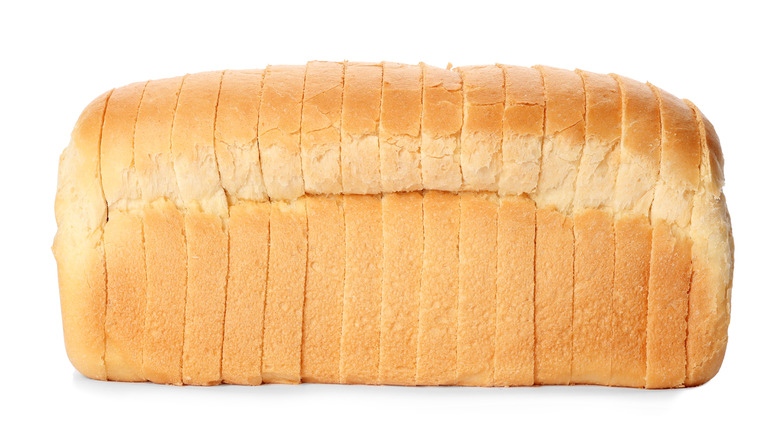How Wonder Bread Helped Eliminate 2 Diseases In The US
Once prized white bread now gets a bad rap. The fluffy bread of our childhood PB and J's has been said to increase the risk of type-2 diabetes, weight gain, blood sugar spikes, and even depression, all while having hardly any nutritional value (via Everyday Health). This news was a gut punch to the masses, who still love white bread — from 2011 to 2020, it was the second-most eaten bread in America, according to Statista.
The poster child for white bread is Wonder Bread, a brand that started in 1921 but took off when pre-sliced bread became popular in the 1930s (via Wonder Bread). This brand was extremely popular among the boomer generation, according to Smithsonian, and sought out for being fluffy white, slightly sweet, and bigger than the other loaves of the time.
As the adverse health effects of white bread have come to light, people are no longer in awe of Wonder Bread. Yahoo placed it on their list of the unhealthiest breads on the planet, which is a devastating characterization in a world turning to whole-grain carbs for energy and longevity (via The Healthy). Before you write off Wonder Bread completely, though, you'll be pleased to learn that once upon a time, it actually saved lives.
Wonder Bread partnered with the government to help cure disease
Although we now know Wonder Bread may pose more health risks than benefits, there was a time when it helped cure disease. During World War II, the company partnered with the U.S. government to start using enriched flour in its products, according to History of Branding. This flour, to which essential vitamins and nutrients were added, was much needed at the time because many Americans were suffering from pellagra from lack of niacin (via Chicago Magazine).
At its worst, there were 250,000 pellagra cases a year, according to the Yale Journal of Biology and Medicine, and some suspected that the disease came from increased germs in food. Beriberi, a condition born of thiamin deficiency, was also being studied around the same time (via The Atlantic). By enriching flour with the vitamins Americans desperately needed, Wonder Bread brought nutrition to the country, and pellagra and beriberi were almost wholly eradicated.
As you might imagine, stuffing essential vitamins and minerals into the sweet, pillowy bread didn't do wonders for its taste. Consumers told Chicago Magazine that fortified Wonder Bread seemed limp and inedible, but it got a refresh in the 1950s that made it palatable. Although not too many people today eat Wonder Bread for its nutrients, in its heyday, it helped pull the country out of an epidemic and a war — wondrous bread indeed.

